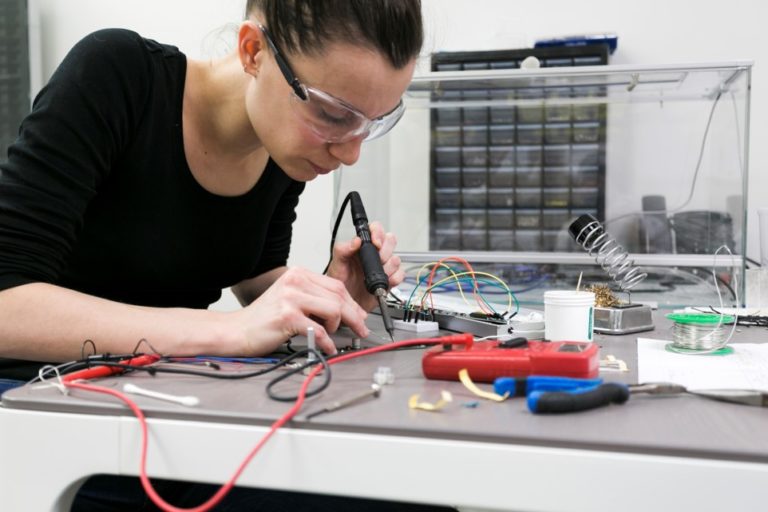You’re probably reading this for the umpteenth time, but it cannot be said enough that academic success cannot necessarily equate to career success. Although getting good grades in graduating exams is a good indicator of college study skills, organizational ability, and learning capacity, but for your students to have truly successful and fulfilling careers, they need to have the right employability skills—technical and otherwise. This is especially true for a tech-driven future, where the demand for skills could be as volatile as the demand for company stocks today.
The upcoming era of rapid technological change is set to redefine the needs of the job market. The changing needs of the job market will cause a shift in the approach taken by educators in not just how they teach but also what they teach.
The fourth industrial revolution

The fourth industrial revolution, characterized by an unprecedentedly fast growth of digital technology, interconnectivity, and even genetic engineering, is not very far from the present. It’s estimated to change our lives beyond our wildest imagination if projections by experts are anything to go by. The digital, physical, and biological worlds will merge to create what is referred to as a cyber-physical system. With the development of technologies like the Internet of Things (IoT) and artificial intelligence, the line between the digital and physical realms will be blurred and everything will be driven by technology—primarily digital.
The importance of software, data, cybersecurity, and biotechnology will be greater than ever. Even to create biological changes through genetic engineering, the use of digital technology is, and will be, indispensable. Thus, it is not very hard to fathom that we are progressing towards an increasingly tech-driven future. The fourth industrial revolution, of which we are only witnessing the beginning, is set to disrupt the way we live, learn, and work.
The transformation of the job market

Be it for data science, artificial intelligence research, or genetic engineering, the demand for those skilled in technological research and development is going to peak in the fourth industrial revolution. This means students and graduates from the STEM (Science, Technology, Engineering, and Mathematics) background are going to find numerous career options to choose from.
Although most low-skill blue-collar jobs will be automated and reduced to near non-existent numbers, high-level jobs (jobs that require high-level technical skills) that involve designing, managing, and improving those automated systems is going to rise. AI researchers, who are already in short supply, will see a higher demand in the future, especially considering the niche combination of skills required to become one.
Data scientists who find new ways to make sense of data that’s going to see an explosive growth in volume and variety due to the expansion of IoT networks will continue to be in demand. Genetic engineering, which today requires an understanding of computer science in addition to expertise in biology and human genomics, will also see a steep rise in demand. However, all these trends might beg the question: is this the end of humanities in education? The answer put simply, is no.
The importance of ‘non-tech’ skills

Now, the tech-driven future might look lopsidedly favorable for science and conversely so for fine arts and humanities. But, the skills taught to art major students can prove invaluable in the tech-driven future, as those skills can help in building better technological applications. Skills like critical thinking, which for instance is taught in philosophy, the art of reason and argument, and creative problem-solving all stem from humanities and help technology majors become more effective and adapted to the future.
These skills also help students in developing study skills strategies to effectively understand complex technical concepts and be more innovative while developing applications. Skills like creative visualization not only help in improving students’ college study skills but also help them perform better in their technical careers. Thus, educators must ensure that they not only teach their students technical skills that would help them to be employable but also include subjects from humanities that would ensure that they thrive through and even beyond the fourth industrial revolution.
The need for agility in education

A downside to the rapid progress and change will be that technologies will evolve faster than before. This will lead to skills (to create, operate, and manage these technologies) to go from in-demand to redundant within a generation, itself! Thus, educational curriculums must be updated at a frequency much higher than today. To do that, educators must know with certainty what skills are in demand at present, as well as, the skills that will be in demand in the future when the students graduate.
Having an agile curriculum design strategy will ensure that universities and colleges can churn out market-ready students every cycle, ensuring a bright future for their students, and in the process, securing their own long-term sustainability.
Using job market analytics tools like Talismatic will enable educators to gauge the demand for different skills in the job market at any given period. This will enable them to teach their students the right things to remain employable even for the toughest of job markets. After all, it’s not the college study skills or the grades that will determine student success but the relevance of their skills.




